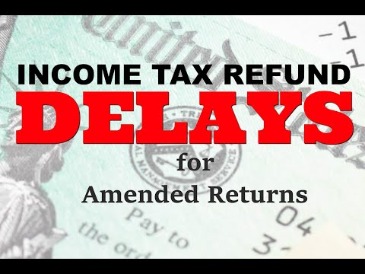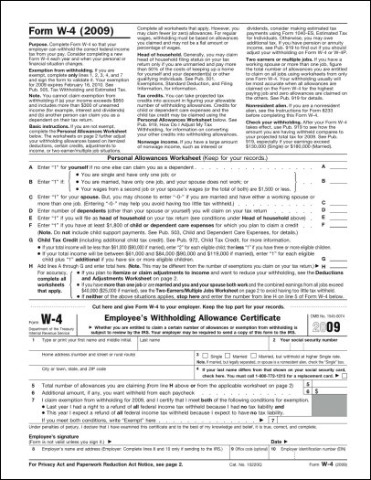Content

The direct method can be used if a company records all transactions on a cash basis. By doing so, they use actual cash inflows and outflows and do not need to make all of the necessary adjustments present in the indirect method. Operating cash flow shows how much cash is generated from your business’s core day-to-day operations. A cash flow statement is one of the most important accounting documents for small businesses. Account ReceivableAccounts receivables is the money owed to a business by clients for which the business has given services or delivered a product but has not yet collected payment. They are categorized as current assets on the balance sheet as the payments expected within a year.
TENABLE HOLDINGS, INC. Management’s Discussion and Analysis of Financial Condition and Results of Operations (form 10-K) – Marketscreener.com
TENABLE HOLDINGS, INC. Management’s Discussion and Analysis of Financial Condition and Results of Operations (form 10-K).
Posted: Fri, 24 Feb 2023 22:27:05 GMT [source]
Yet for nearly 30% of SMBs, running out of https://intuit-payroll.org/ is the top cause of failure. If you’re using the wrong credit or debit card, it could be costing you serious money. Our experts love this top pick, which features a 0% intro APR until 2024, an insane cash back rate of up to 5%, and all somehow for no annual fee. No, but it does make it a lot easier, since accounting software automates much of the entire bookkeeping/accounting process, while also reducing errors. To help you determine which method is the best fit for your business, we break each down for you here. Although this calculation is easy, investors can’t access so much information about the company through it.
Operating Cash Flow (OCF) vs. Net Income and Earnings Before Interest and Taxes (EBIT)
Deferred income tax on a cash flow statement refers to the amount of tax that has not yet been paid but is expected to be owed. This typically occurs when assets are depreciated using different methods and there is a variance between these two amounts. The net after-tax profit for a specific period can be reflected by the amount at the bottom of the cash flow statement. The bottom line of the cash flow statement is referred to as the cash balance. Reversing the operating cash flow equation by subtracting EBIT and depreciation from the operating cash flow amount allows a business to see just how much taxes are impacting this amount. Operating cash flow is useful for helping executives track their business’s financial health so they can make decisions on how it will operate.
A cash flow statement is a financial statement that provides aggregate data regarding all cash inflows and outflows that a company receives. The indirect method uses changes in balance sheet accounts to modify the operating section of the cash flow statement from the accrual method to the cash method. For example, booking a large sale provides a big boost to revenue, but if the company is having a hard time collecting the cash, then it is not a true economic benefit for the company. On the other hand, a company may generate high amounts of operating cash flow but report a very low net income if it has a lot of fixed assets and uses accelerated depreciation calculations.
Operating Cash Flow (OCF): Definition, Cash Flow Statements
Second, OCF does not reflect changes in working capital, such as changes in accounts receivable or inventory. Thus, it tends to be a better indicator of a company’s health and future success. As you can see in the above example, there is a lot of detail required to model the operating activities section, and many of those line items require their own supporting schedules in the financial model. In addition, a company’s revenue recognition principle and matching of expenses to the timing of revenues can result in a material difference between OCF and net income. The less prevalent approach to calculating OCF is the direct method, which utilizes cash accounting to track the movement of cash during a specified period. Once those adjustments have been made, the resulting line item is the “Cash Flow from Operating Activities”, i.e. the operating cash flow .

The How To Calculate Operating Cash Flow s above are meant to give you an idea of how to perform the calculation on your own, however, they are not entirely exhaustive. There can be additional non-cash items and additional changes in current assets or current liabilities that are not listed above. The key is to ensure that all items are accounted for, and this will vary from company to company. Financial analysts sometimes prefer to look at cash flow metrics because they strip away certain accounting anomalies.
Drive Business Performance With Datarails
It is calculated by subtracting a company’s capital expenditures from its operating cash flow. NOCF can be used to assess a company’s ability to cover its operating expenses, repay debt, and make investments. We calculated three variables, operating cash flow , operating cash flow divided by current liabilities , and operating cash flow divided by total liabilities .
- INVESTMENT BANKING RESOURCESLearn the foundation of Investment banking, financial modeling, valuations and more.
- Knowing how to calculate cash flow can be a game-changer for small businesses.
- It is cash flow from the normal day to day business operations and not from investing or financing activities.
- Moreover, investors prefer analyzing a cash flow because it shows the problem areas in the operations in an easier way.
- While cash flow is important, calculating your operating cash flow can provide you with a much clearer picture of how profitable your business really is.
In simpler terms, OCF is calculated by subtracting operational costs (i.e., rent, utilities, and other production-related expenses) from gross revenue. Learn about what operating cash flow is and how learning to calculate it correctly can help your business thrive, in this guide from QuickBooks. This means that Company A earns £2.08 from operating activities, per every £1 of current liabilities. Essentially, Company A can cover their current liabilities 2.08x over. For this reason, every public company must report this number in their annual cash flow statement and quarterly financial reports. Time after time, CFOs state that financial leadership is exactly what allows a business to expand its performance and profitability.
Everything You Need To Master Financial Modeling
Management can determine whether the business can afford its expenses, and whether they need to make changes. Cash flow is also used to prove a business’s creditworthiness to lenders and investors. Cash flow refers to the way in which money flows into and out of a business, and operating cash flow is cash flow that is connected with operating activities.

OCF has a serious drawback as a measure of potential financial distress because it disregards size-of-business considerations as well as any unused borrowing capacity. CL and TL offset this drawback by relating OCF to a company’s level of short-term and long-term indebtedness, respectively. To calculate operating cash flow under the indirect method, subtract all depreciation, amortization, income taxes, and finance-related income and expenses from the reported net income of a business. Conversely, it can also be calculated by subtracting all operating expenses from revenues. Depreciation and amortization are subtracted because they are non-cash expenses. The method chosen depends on which information is more readily available.
How to Calculate Operating Cash Flow
This calculation is simple and accurate, but does not give investors much information about the company, its operations, or the sources of cash. That’s why GAAP requires companies to use theindirect methodof calculating the cash flows from operations. Below is a short video tutorial explaining how the three sections of a cash flow statement work, including operating activities, investment activities, and financing activities. Operating Cash Flow measures the net cash generated from the core operations of a company within a specified time period.
This is a financial statement that summarizes the cash and cash equivalents coming and going from your company. Unlike the latter, operating cash flow covers unplanned expenses, earnings, and investments that can affect your daily business activities. Non-cash Items Are AddedNon-cash expenses are those expenses recorded in the firm’s income statement for the period under consideration; such costs are not paid or dealt with in cash by the firm. For example, a company that manufactures widgets must make more money selling them than it cost to produce them. In other words, cash inflows must always be greater than cash outflows in order for the business to be profitable and able to successfully pay its bills.
